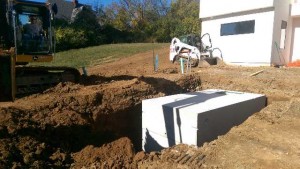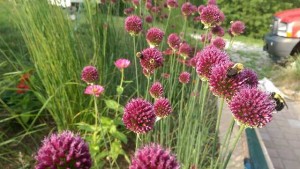Services
- Bio Retention Design/Installation/Maintenance
- Vegetated Roof Design/Installation/Maintenance
- Native Landscape Design/Installation/Maintenance
- Storm Watershed Management
- Rain Water Harvesting / Collection
- Rain Gardens
- Soil Infiltration Testing
- Rooftop Garden/Urban Agriculture specialist
- Specialty Irrigation
- Healing Gardens

“The significant problems we have cannot be solved at the same level of thinking with which we created them.”
-Albert Einstein
As a Green Infrastructure Landscape Design company our shared goal is to preserve natural areas and link those areas of habitat and people to benefit biodiversity and counter the fragmentation of our development footprint. With conservation in mind the green infrastructure approach adds value to land development, aids habitat restoration and promotes balance between people and nature. We believe, urban revitalization depends on the use of green infrastructure to alleviate the problems we have incurred with water and climate. Wanting to emphasize the value of natural areas within the city has propelled us from being just a landscape company to centering our studies and efforts on green roofing, watershed management, habitat restoration and sustainable land use. With expertise in many facets of these areas we can assist you with large scale commercial developments down to a backyard rain garden. We promote the Sustainable Site Initiative along with the U.S. Green Building Councils green building strategies and watershed management practices through the LEED process, working with state and local best management practices. Our efforts are to create the framework that will ensure our natural resources will be there for future generations.

Green Infrastructure Benefits
Green infrastructure has a number of environmental and economic benefits in addition to reducing the volume of sewer overflows and runoff.
- Cleaner Water – Vegetation, green space and water reuse reduce the volumes of storm water runoff and, in combined systems, the volume of combined sewer overflows, as well as reduce concentrations of pollutants in those discharges.
- Enhanced Water Supplies – Most green infiltration approaches involve allowing storm water to percolate through the soil where it recharges the groundwater and the base flow for streams, thus ensuring adequate water supplies for humans and more stable aquatic ecosystems. In addition, capturing and using storm water conserves water supplies.
- Cleaner Air – Trees and vegetation improve air quality by filtering many airborne pollutants and can help reduce the amount of respiratory illness. Transportation and community planning and design efforts that facilitate shorter commute distances and the ability to walk to destinations will also reduce vehicle emissions.
- Reduced Urban Temperatures – Summer city temperatures can average 10ºF higher than nearby suburban temperatures. High temperatures are also linked to higher ground level ozone concentrations. Vegetation creates shade, reduces the amount of heat absorbing materials and emits water vapor – all of which cool hot air. Limiting impervious surface and using light colored impervious surfaces (e.g., porous concrete) also mitigate urban temperatures.
- Moderate the Impacts of Climate Change – Climate change impacts and effects vary regionally, but green infrastructure techniques provide adaptation benefits for a wide array of circumstances, by conserving and reusing water, promoting groundwater recharge, reducing surface water discharges that could contribute to flooding. In addition, there are mitigation benefits such as reduced energy demands and carbon sequestration by vegetation.
- Increased Energy Efficiency – Green space helps lower ambient temperatures and, when incorporated on and around buildings, helps shade and insulate buildings from wide temperature swings, decreasing the energy needed for heating and cooling. Further, diverting storm water from wastewater collection, conveyance and treatment systems reduces the amount of energy needed to pump and treat the water. Energy efficiency not only reduces costs, but also reduces generation of greenhouse gases.
- Source Water Protection – Green infrastructure practices provide pollutant removal benefits, thereby providing some protection for both ground water and surface water sources of drinking water. In addition, green infrastructure provides groundwater recharge benefits.
- Community Benefits – Trees and plants improve urban aesthetics and community livability by providing recreational and wildlife areas. Studies show that property values are higher when trees and other vegetation are present.
- Cost Savings – Green infrastructure may save capital costs associated with paving, creating curbs and gutters, building large collection and conveyance systems, and digging big tunnels and centralized storm water ponds; operations and maintenance expenses for treatment plants, pumping stations, pipes, and other hard infrastructure; energy costs for pumping water around; cost of treatment during wet weather; and costs of repairing the damage caused by storm water, such as stream bank restoration.
Did you know…
- For every ton of paper that is recycled, the following is saved: 7,000 gallons of water; 380 gallons of oil; and enough electricity to power an average house for six months.
- You can run a TV for six hours on the amount of electricity that is saved by recycling one aluminum can.
- By recycling just one glass bottle, you save enough electricity to power a 100-watt bulb for four hours.